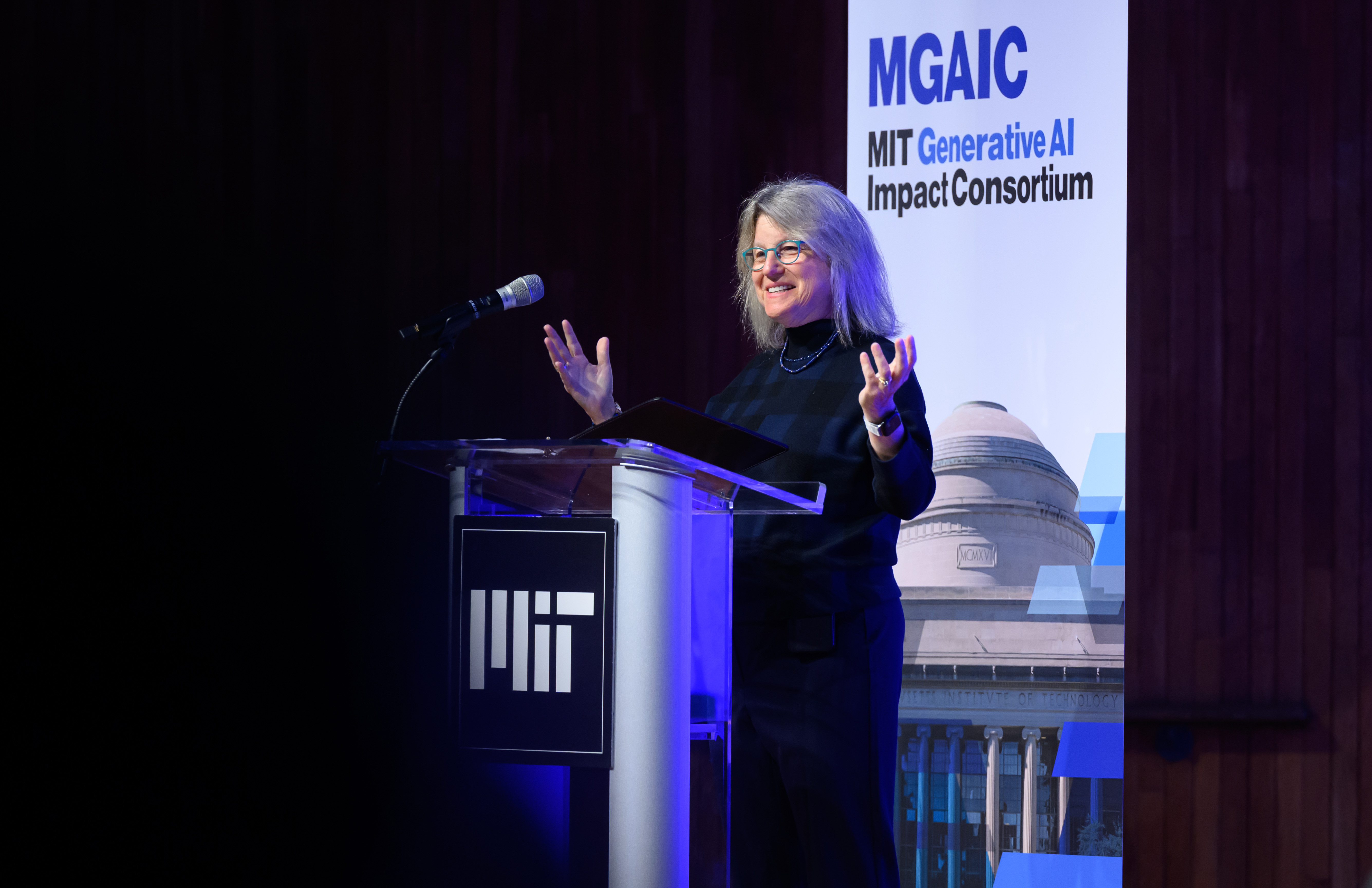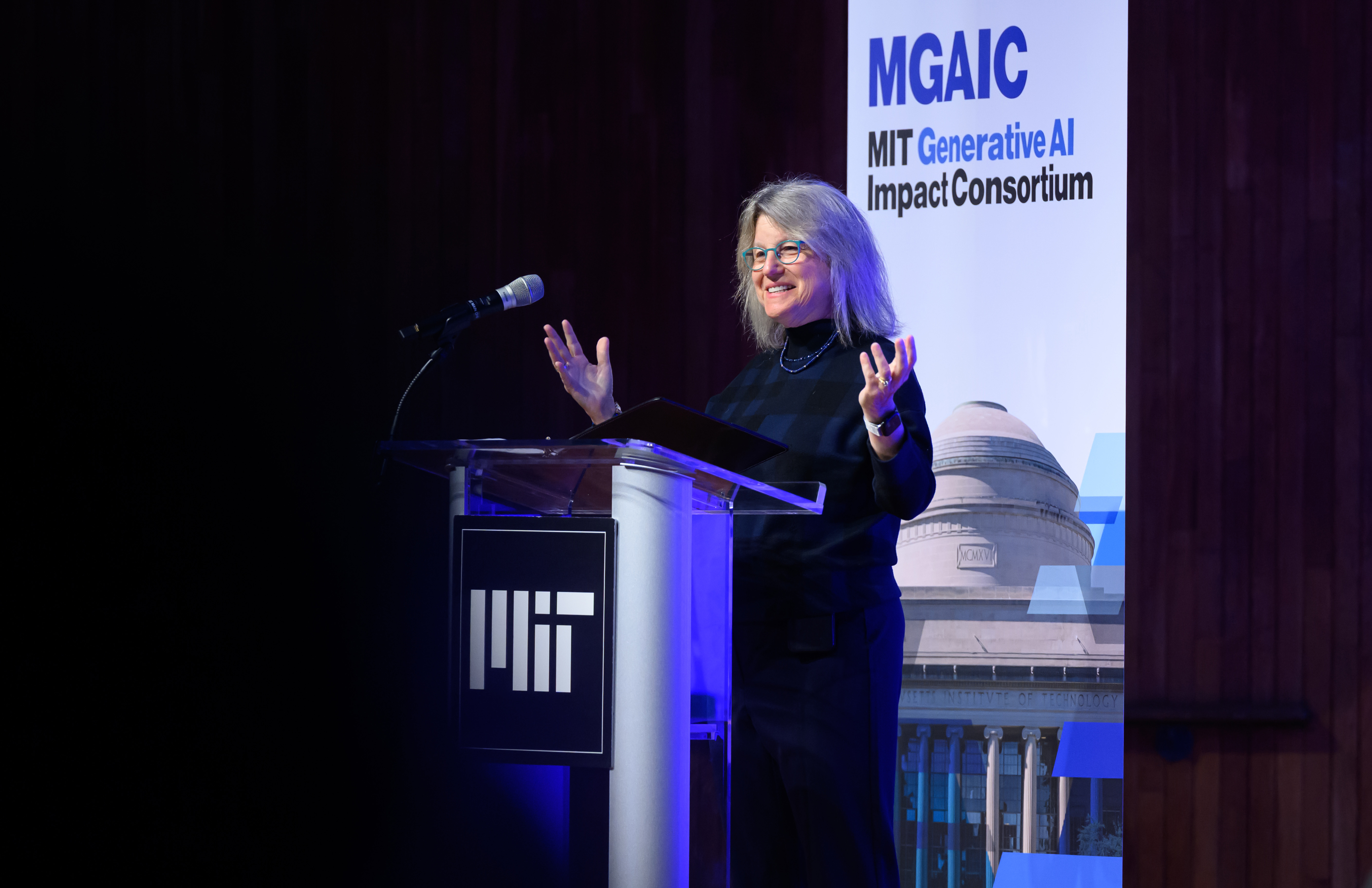
When OpenAI launched ChatGPT to the world in 2022, it introduced generative synthetic intelligence into the mainstream and began a snowball impact that led to its speedy integration into business, scientific analysis, well being care, and the on a regular basis lives of people that use the know-how.
What comes subsequent for this highly effective however imperfect instrument?
With that query in thoughts, tons of of researchers, enterprise leaders, educators, and college students gathered at MIT’s Kresge Auditorium for the inaugural MIT Generative AI Affect Consortium (MGAIC) Symposium on Sept. 17 to share insights and talk about the potential way forward for generative AI.
“It is a pivotal second — generative AI is shifting quick. It’s our job to be sure that, because the know-how retains advancing, our collective knowledge retains tempo,” mentioned MIT Provost Anantha Chandrakasan to kick off this primary symposium of the MGAIC, a consortium of business leaders and MIT researchers launched in February to harness the facility of generative AI for the nice of society.
Underscoring the vital want for this collaborative effort, MIT President Sally Kornbluth mentioned that the world is relying on college, researchers, and enterprise leaders like these in MGAIC to deal with the technological and moral challenges of generative AI because the know-how advances.
“A part of MIT’s accountability is to maintain these advances coming for the world. … How can we handle the magic [of generative AI] so that every one of us can confidently depend on it for vital functions in the actual world?” Kornbluth mentioned.
To keynote speaker Yann LeCun, chief AI scientist at Meta, essentially the most thrilling and vital advances in generative AI will almost definitely not come from continued enhancements or expansions of enormous language fashions like Llama, GPT, and Claude. Via coaching, these monumental generative fashions be taught patterns in large datasets to supply new outputs.
As a substitute, LuCun and others are engaged on the event of “world fashions” that be taught the identical means an toddler does — by seeing and interacting with the world round them by sensory enter.
“A 4-year-old has seen as a lot information by imaginative and prescient as the most important LLM. … The world mannequin goes to develop into the important thing element of future AI methods,” he mentioned.
A robotic with one of these world mannequin may be taught to finish a brand new process by itself with no coaching. LeCun sees world fashions as the most effective method for firms to make robots good sufficient to be typically helpful in the actual world.
However even when future generative AI methods do get smarter and extra human-like by the incorporation of world fashions, LeCun doesn’t fear about robots escaping from human management.
Scientists and engineers might want to design guardrails to maintain future AI methods on observe, however as a society, now we have already been doing this for millennia by designing guidelines to align human conduct with the frequent good, he mentioned.
“We’re going to must design these guardrails, however by building, the system will be unable to flee these guardrails,” LeCun mentioned.
Keynote speaker Tye Brady, chief technologist at Amazon Robotics, additionally mentioned how generative AI may impression the way forward for robotics.
For example, Amazon has already included generative AI know-how into a lot of its warehouses to optimize how robots journey and transfer materials to streamline order processing.
He expects many future improvements will concentrate on using generative AI in collaborative robotics by constructing machines that enable people to develop into extra environment friendly.
“GenAI might be essentially the most impactful know-how I’ve witnessed all through my complete robotics profession,” he mentioned.
Different presenters and panelists mentioned the impacts of generative AI in companies, from largescale enterprises like Coca-Cola and Analog Gadgets to startups like well being care AI firm Abridge.
A number of MIT college members additionally spoke about their newest analysis initiatives, together with using AI to scale back noise in ecological picture information, designing new AI methods that mitigate bias and hallucinations, and enabling LLMs to be taught extra in regards to the visible world.
After a day spent exploring new generative AI know-how and discussing its implications for the longer term, MGAIC college co-lead Vivek Farias, the Patrick J. McGovern Professor at MIT Sloan College of Administration, mentioned he hoped attendees left with “a way of chance, and urgency to make that chance actual.”


Leave a Reply